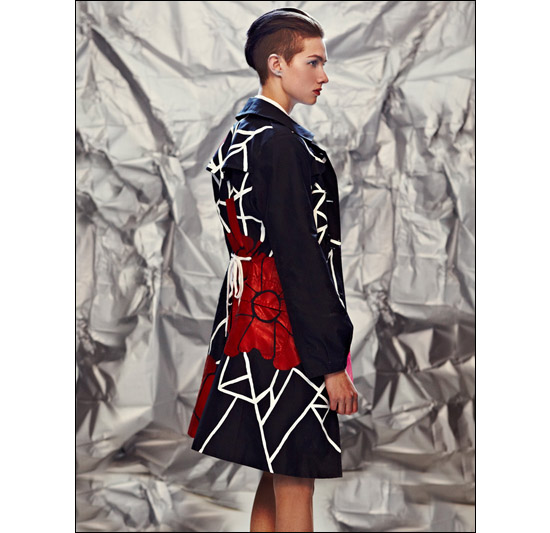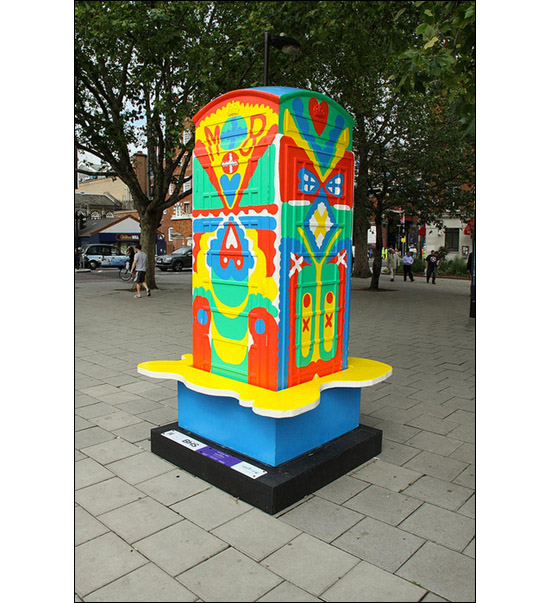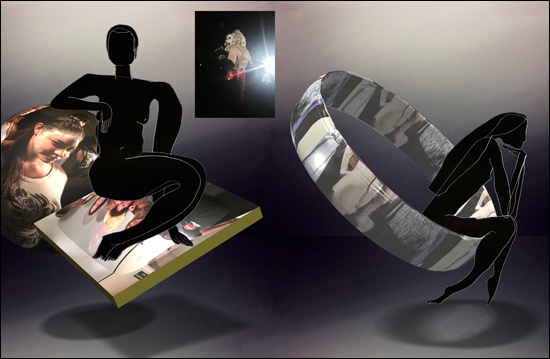Varoom 31 – Future Imperfect
In Future Imperfect, Zoe Taylor talks to Margot Bowman about her journey as an illustrator, the development of her distinctive style and what it’s like working across different media and disciplines.
Zoe Taylor explores the highly original, fantastical work of illustrator Margot Bowman whose eclectic use of media, futuristic narratives and relationships with brands is mapping a path for the commercial image-maker.
“The distinctiveness and individuality of the made image are in high demand”
Zoe reflects on the eclectic range of works produced by Margot in her creative career so far, identifying her as a true visionary illustrator. Margot’s influences and interests are displayed through colourful and challenging works, Zoe suggests “her work often imagines how we will live in the future and practically explores issues such as sustainability”. Margot’s interest in fashion and the future led her to design her own capsule collection, in the form of hand-painted found garments that explore the future of British national identity.

Albion 2080, Photography by Sarah Brimley
“Bowman’s interest in the future is played out in the designs of her own clothing”
Here are a few extracts of Margot’s responses to Zoe’s questions in their interview:
Zoe: A lot of your commissions have been fashion-related and you design clothing, too. What attracts you to fashion?
Margot: Fashion is really experimental. It’s all about the new. That’s the main premise of the fashion industry – newness – so if you like to experiment and make new things, it’s great. Also, being a woman, I felt alienated by graphic design. It’s not emotional, it’s not colourful, it’s all about functionality and that’s not who I am. Fashion was on the opposite end of the spectrum, where it’s OK to explore all of those things. For me, fashion is non-verbal communication – it’s visual communication. Clothing is your exhibition. We’re all communicating with each other through what we wear.

Talk To Me, BT ArtBox Project
“Her drawing has a disarmingly naïve quality”
Zoe: What is it you like about working across different mediums and disciplines?
Margot: It just keeps things really fresh so I don’t get too familiar and too comfortable with one thing – I have to keep figuring stuff out again.
Zoe: You appear to do it effortlessly and it looks like you’re always having fun.
Margot: I do enjoy doing what I do. It should be playful and alive and vibrant and as true as it can be, because that’s why people engage in culture, whether its music or art or literature or whatever. As a creative person, you have to be able to convey feelings. That’s your job – to feel something and convey it.

London Collections for Baku Magazine
“It’s the curious figures that populate her work that we really engage with”
Zoe: Your drawing is very distinctive. What are your influences?
Margot: Picasso’s blue and pink periods. There’s this blue-period painting of a clown, which I love. Tim Burton’s drawing is amazing, too. I like Ralph Steadman because his work is really expressive. I love Francis Bacon – what I really like about his work is that it almost makes perfect anatomical and spatial sense but at the same time it doesn’t. His triptychs have had such a big influence on how I form images.
Zoe: You’ve said before that you like making strange, odd things. What draws you to strangeness?
Margot: I think it comes from feeling like an outsider yourself, so you want to fill the world with other odd things and make strange things beautiful. Sarah Lucas has said she uses art-making as a way to invent friends. Although I had friends when I was a kid, I still felt like an outsider.
Varoom 31 is available here
Back to News Page
